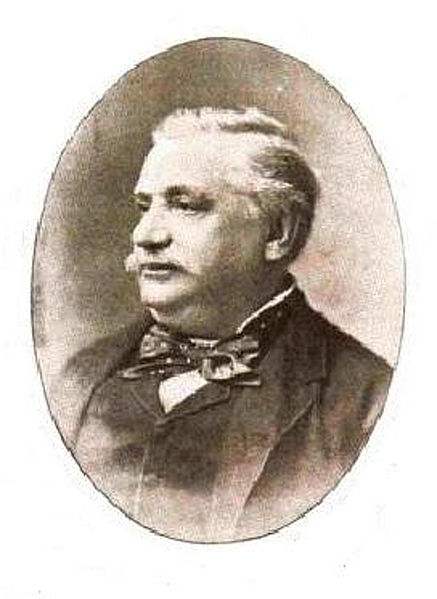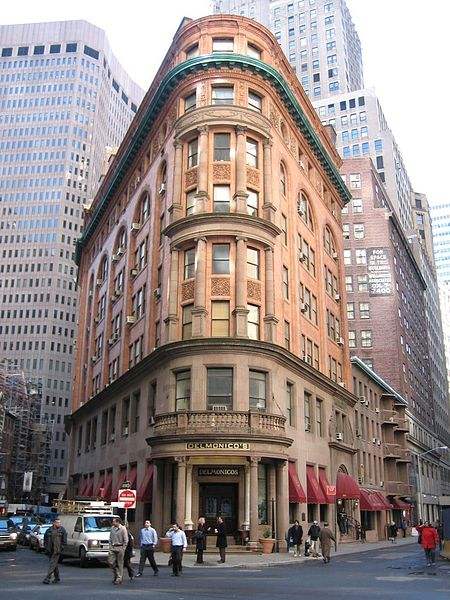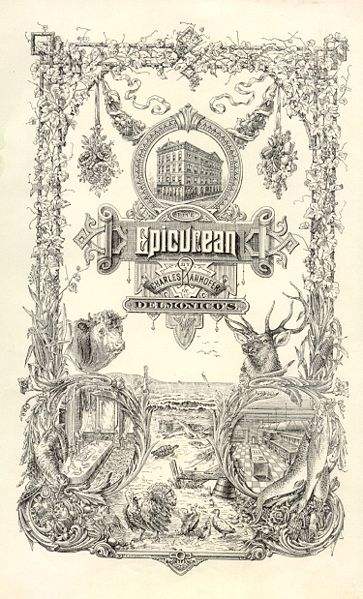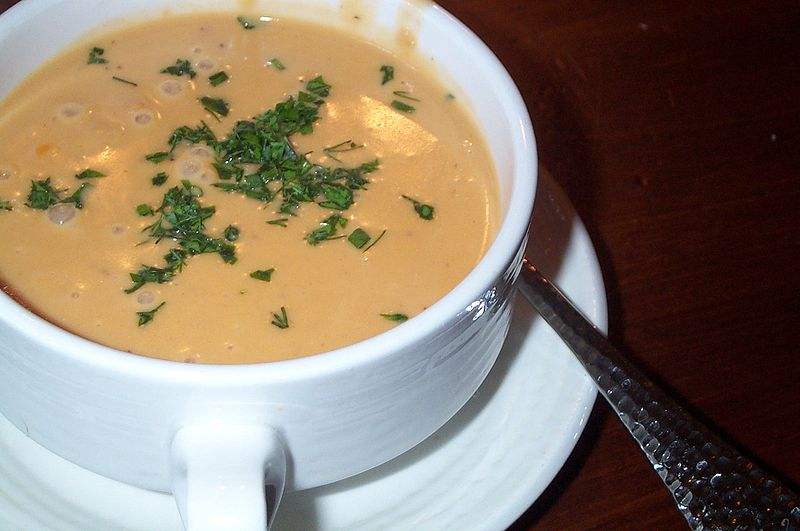
Charles Ranhofer
Charles Ranhofer was the undisputed master chef in the United States for the last 40 years of the 19th century.
He was born in 1836, in a northern suburb of Paris that is known for its Abbey-Basilica of Saint-Denis, the burial place of the French kings. With his father and grandfather having been chefs before him, one could say that fine cuisine came naturally to him, by way of tradition. At twelve, he started his apprenticeship with one of the city’s pastry makers. Four years later, we see him as the private chef of a member of Europe’s ancient nobility, the Prince d’Henin and Count of Alsace. Then, in 1856, Ranhofer took the step that would define him. He emigrated to the U.S. America would be his grand stage, until his 1899 death, in New York City.

Photo of Delmonicos in New York City by ChrisRuvolo.
In 1862, Ranhofer was hired by Lorenzo Delmonico, and it was at Delmonico’s that he was to shine. Indeed, his cooking talent made the restaurant’s fame. With the kitchen as his unquestioned domain, Ranhofer sent the distinguished guests at the tables one culinary perfection after another. While Eggs Benedict are one of his most popular, the list of his inventions seems endless. Having developed and perfected his God-given talent, Ranhofer created new culinary delights with the ease with which Fra Angelico, Giotto, and other great painting masters, projected the marvels of art onto plaster or canvas.

Epicurean book, a cookbook of over 1,000 pages by Charles Ranhofer.
In decades marked by a massifying, standardizing, and leveling Industrial Revolution, Ranhofer brought to America an appreciation for the high refinement, balance, and sublimity of French haute cuisine–one of the more notable fruits of the centuries of Christian culture and civilization in Old Europe.
Lobster and Crawfish Soup
(Potage de Homard et d’Écrevisses)
Ingredients:
1/4 cup finely diced celery
1/4 cup finely diced carrots
1 large onion, finely diced
1 T minced garlic
1 Quart of white wine (your choice)
2 Quarts of Chicken broth
The juice from 4 tomatoes
Eighteen crawfish
Four pounds of live lobsters (selecting the smallest ones)
1 Quart Fish soup stock (previously made up – recipe not included)
2 cups Heavy Cream
8 egg yolks
1 Cup of butter (2 Sticks)

Photo by French Recipes
Mince carrots, onions and celery and garlic, fry them in butter. Add one quart of white wine, two quarts of broth, and the tomato juice into a large pot. Put the crawfish into the stock and boil for five minutes. Lift them out, add the [live] lobsters, cook them for half an hour and then drain them, picking out all the meat. Keep aside only the meat from the claws and pound the rest, dilute this with the above stock, adding one quart of thickened fish soup stock. Strain through a sieve and heat up to boiling point, but do not allow it to boil. Add egg yolks, cream and butter to the soup. Detach the tails from the bodies of the crawfish; suppress the belly side so as to keep only the thin shells of the bodies, and stuff these with the crawfish meat, chopped up fine and mixed in with an equal quantity of fish forcemeat (made with crawfish & butter), season well, and poach them in boiling, salted water.
Put these stuffed bodies into the soup as garnishing, and if too large cut them in two, lengthwise.

Photo by Stu Spivack
The original recipe, from Epicurean is here:
http://digital.lib.msu.edu/projects/cookbooks/coldfusion/display.cfm?ID=epia&PageNum=287
Interested in trying some of Chef Ranhofer’s other recipes, click on Read Transcript of Part 1 or Part 2. http://digital.lib.msu.edu/projects/cookbooks/html/books/book_47.cfm

Tagged as:
Food and History of Recipes linked to Nobility,
Food Origins,
Honor,
Leaders,
Nobility,
Recipes,
Recipes linked to Nobility,
United States,
World of nobility















